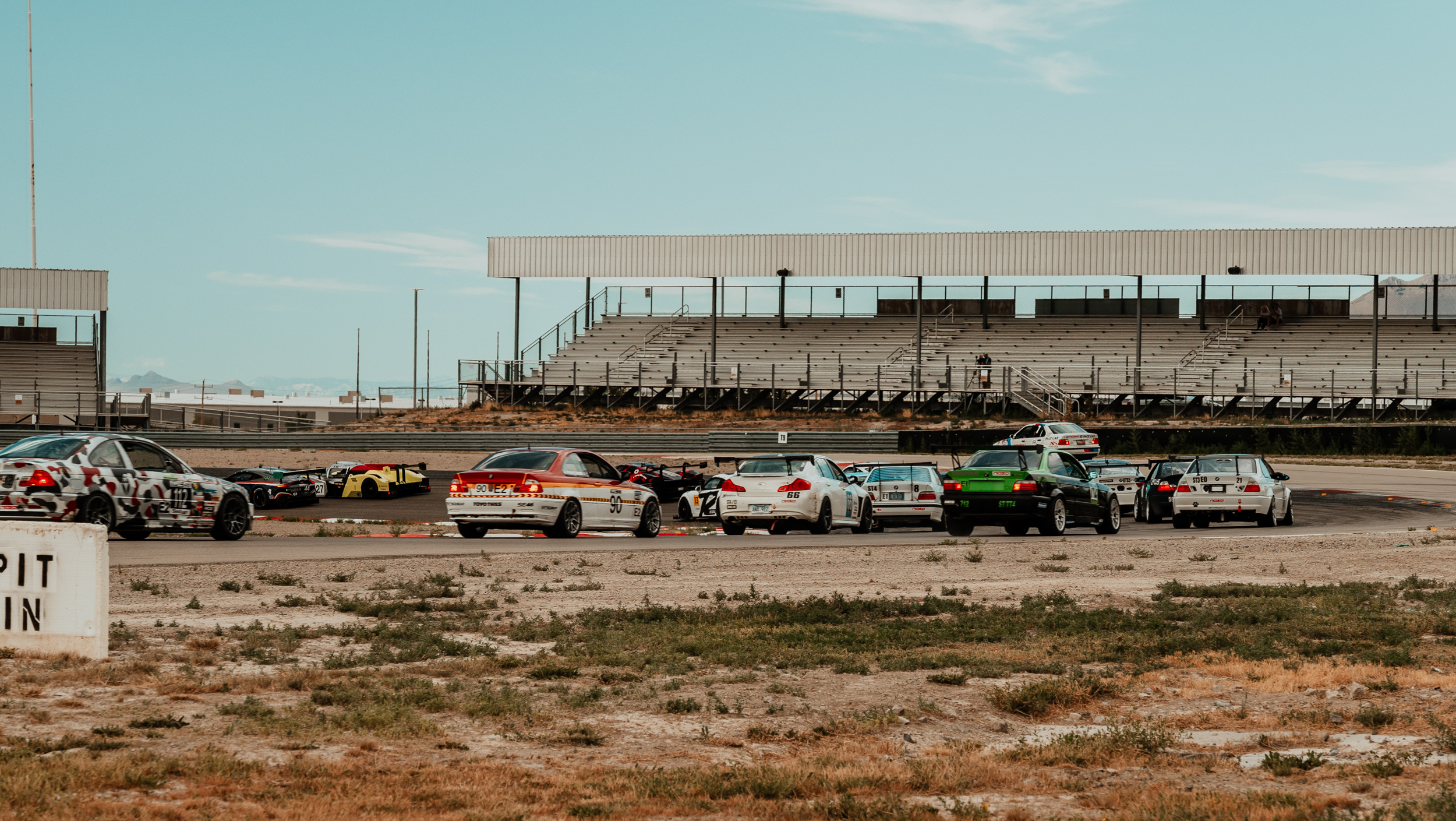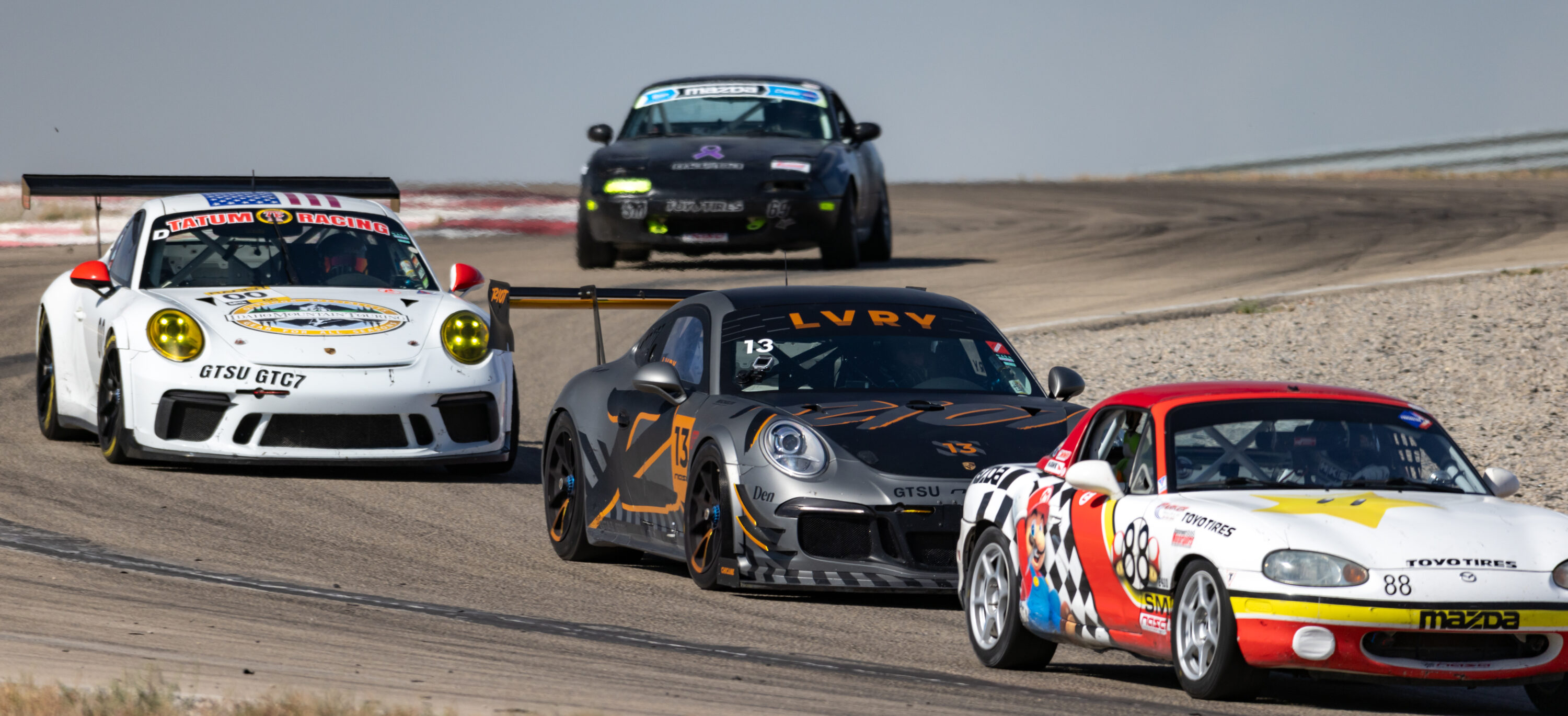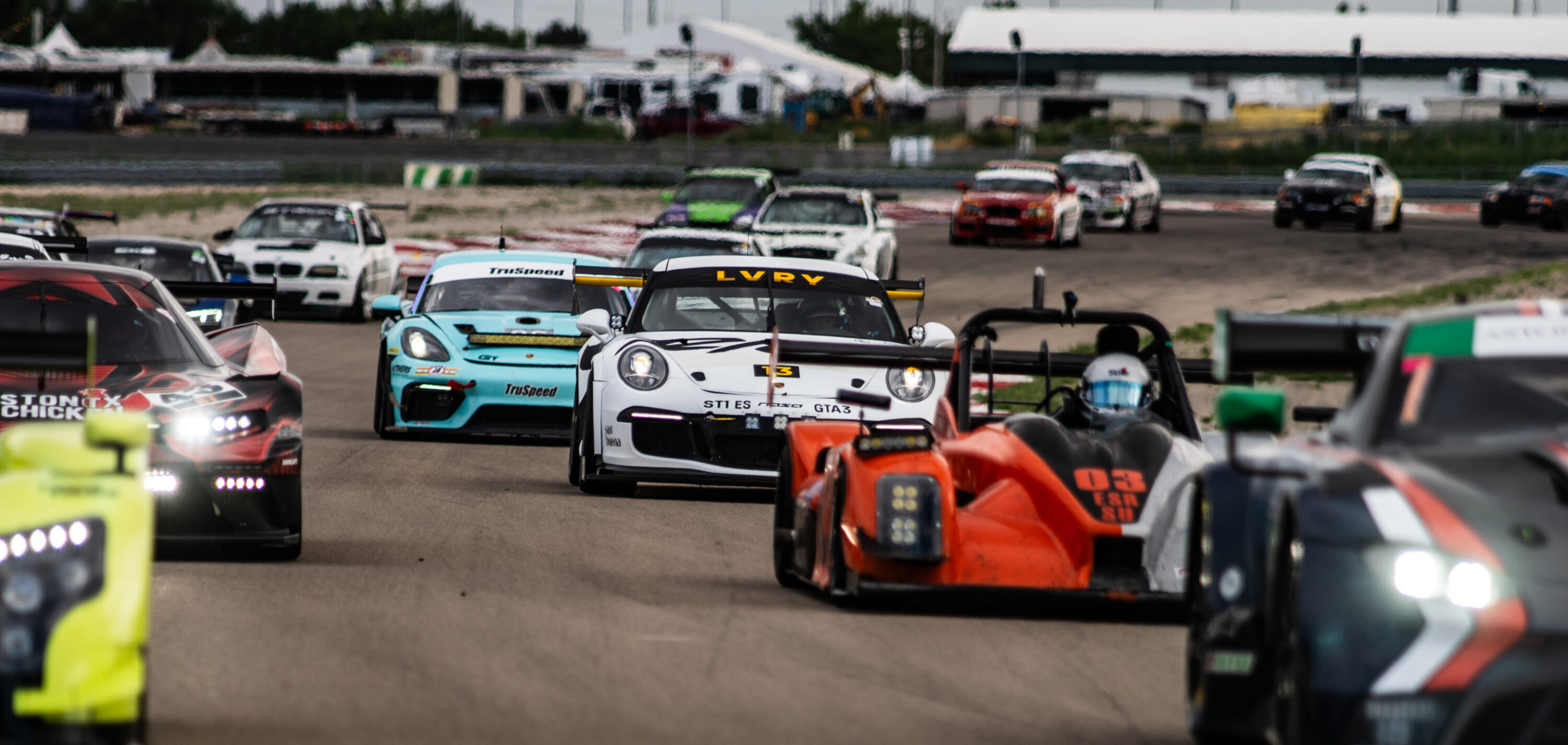
Last month, I rejoined my Spec Miata comrades in NASA Utah’s QuadDuro, an annual tradition in October where we race all four track configurations at UMC.
It had been over two years since I last ran a full race weekend and in a car that I owned, so I was both excited and somewhat nervous because I just wanted to have a good race weekend.
I defined my own good race weekend as such:
- Get all of my sessions in
- Drive Better — which had three parts (described below)
All of these things were intentionally chosen to help me focus on what I know to be good habits for driving well, which ultimately result in good race results. None of these things, however, focused on particular race results or on trying. All of them were on doing and each of them would be very actionable throughout the weekend.
Getting all of my sessions in
This was important for one simple reason: the most track-time I’d had in the past two years was a ~2-hour stint in the August 6-Hour Enduro — and I didn’t do great in that race, turning some very slow 2:27 lap times on UMC’s Outer Loop. Aside from that, I had a handful of sessions in some other Spec Miatas and none of those sessions were on a simple Practice Day — all were on race days.
Suffice it to say: I needed the seat-time.
It may seem a simple goal, but as a NASA Group Leader, I have other responsibilities throughout the day: running classroom sessions, ensuring every driver in my student group had an instructor in the right-seat, and observing each session. Time was at a premium
On top of that, I had just purchased my Spec Miata earlier in the year and had spent zero time actually driving it, because I needed to refit to the car to have the current Penske suspension, give it a once-over for maintenance, and drop the floorpan so I could fit comfortably in the car — not a small list of things to do and each had their expenses.
So it was absolutely crucial that I managed my time off-track to fulfill my responsibilities and prep the car for each session. I did so by:
- Following a session-by-session habit that ensured I was mentally prepared
- Following a session-by-session protocol to ensure the car was prepared
- Triaging any potential suspension adjustments to address handling issues or preference
Ultimately, it meant that I had to be efficient and not risk getting half-way through adjusting my alignment (or some other project) in favor of driving the car.
Drive Better
This may seem like a silly goal, because who doesn’t want to drive better and go faster on a racetrack? But it was effective for me, because it mean doing several things:
- Driving smoothly and working with the car
- Staying heads-up and managing risk
- Keeping my eyes up and scanning multiple reference points on-track
Driving smoothly and working with the car
Right away, I encountered a tendency for the car to understeer when I rolled on the throttle at corner-exit, which is not typically my preference.
Rather than immediately unpacking the Smart Strings and camber gauge or adjusting my rear sway bar, I adjusted my driving, focusing on subtly releasing the brakes after turn-in on appropriate corners and easing out of the throttle smoothly on others (rather than being abrupt with either.
The result was that less weight shifted off of the front tires, and I went faster.
Later on in the weekend, I encountered oversteer in only a few corners — typically medium-speed corners or corners that were off-camber.
I identified the change I wanted to make as a reduction in negative camber on the left-hand side of the car, as well as a small change to the rear swa bar. I was also feeling confident in my driving (I was not ‘forcing’ the car) and thought it was a good thing to try.
However — by the time I had gotten to this point as a driver, it was Saturday afternoon and there were two races to run. I mentioned that I had other responsibilities to attend to and adjusting rear toe on a Spec Miata can be… challenging.
So I decided to leave the car alone and again focus on what I could do on-track. It was a combination of patience, squaring-off certain corners, and very gradually rolling onto throttle in the mid-corner (sound familiar??).
Overall, I know that I left speed on the table, but was able to enter each race with confidence in knowing what I could do to mitigate the situation, as well as not having just thrashed on my car until the last minute.
Staying heads-up and managing risk
This one was pretty simple: I was re-entering the class after a significant amount of time off and with a car that I own (meaning my risk tolerance is naturally higher — I don’t wad up friends’ cars).
Sprint races require that a driver makes progress early in a race if they want a chance at the podium — either in keeping their position or advancing their position.
Comparing times against my competitors, I was 1–2 seconds off-pace to vie for 3rd place — not insurmountable, but thrashing hard wouldn’t get me there.
In the video below, you’ll see the typical approach I made to race starts — I gave space and made the best of the melee that I could. I’m still getting the precise feel of my car and didn’t want to find myself sliding into a friend and competitor, potentially ending both of our races.
No passes I made during the weekend were at 100% traction usage and I, fortunately, remained contact-free — 95% of this was by-design.
This resulted in having some great battles with the #7 Black/White car you see in the video above throughout the weekend, as well as with the matte green car on Saturday.
Keeping my eyes up and scanning
I’ve put countless miles on UMC over the past decade, but that doesn’t mean I can drive it in autopilot and be respectably quick. I focused on gathering information about the track, where I was on-track, and if my trajectory was proper.
Furthermore, I began rebuilding my reference points for use when I was in traffic.
These both helped me go faster alone and in traffic, because once I had established confidence in myself and gauged my competitors, I was able to strategically make the most of my situations by allowing room for a competitor if we were sharing a corner, but also challenging them.
In the video below, I attempt a pass into UMC East T1 that doesn’t stick, but results in having a chance into T6–7.
Having the right reference points made all the difference, especially when it came time to challenge into T6. By forcing my competitor to take a compromised line, he had to lift off the throttle late in the corner where I was able to stay 100% on-throttle. The net result was being able to hold the outside line in T7, resulting in the faster exit — basically a mirror image of what happened to me in T1!
Tying it all together
I set my mantra for the day as ‘Drive Better’. It was a reminder to not force things, to not try so hard, but to be aware of as much of the information my senses were taking in as possible.
I was also able to remove my ego from the equation — I had nothing to prove except that I was a competent racer. No epic off-track-excursions, no contact, and also no expectations to win or to set new track records.
As I prepare for the 2023 Season, I’m ready to make some adjustments to the car and to build upon what I re-established last month. The challenge will be to continue to maintain this mindset while also striving to improve every single day.






